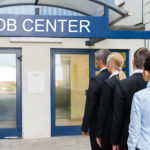The Rage to Quit: Why Employees Are Really Leaving the Workforce

The Rage to Quit: Why Employees Are Really Leaving the Workforce
It feels impossible to tell exactly what is happening within the job market these days. In one headline, you are likely to read about how job vacancies are at an all-time high and that unemployment is at an all-time low. Then you may see the headlines that reveal how a record number of people are leaving their job and not replacing them with another. I have to ask: Where is everybody? And what is happening? The reason for extended unemployment benefits from COVID has now expired. What will never expire is that people have to earn a living.
Making Sense of this New Work Information
On the surface, it is hard to make sense of what is taking place in the United States with the workforce. It’s a strange phenomenon that has been termed “the great resignation,” and in 2021, it was pretty common for articles to refer to this. The question remains why they had to come up with that phrase. What we do know is that a substantial number of people have been leaving the American workplace for a variety of reasons—and these reasons are not the ones you would typically think of first.
Knowing that job vacancies are at an all-time high and unemployment is so low, haven’t you wondered where the people have gone and what they are doing? It’s like the granny from the old Wendy’s commercial asking, “Where’s the beef?” Just replace beef with people, and you have the general idea of what the great resignation has led to. Something is missing, and that’s what needs to be addressed.
Defining What Is Not the Problem and What Is the Problem
Several bits of information have been learned to date about this chaotic state of work affairs. The most unexpected is that very few resignations are about money. Most people are surprised to learn this. These people who leave their jobs are not concerned about benefits either. Most people would agree that these two things are essential; they do matter. What could matter more to someone?
What weighs the most heavily on people is the modern-day workplace. They want to fit in and be a part of something. If this is lacking, how can we fix it? That’s what needs to be determined.
With so many people able to work virtually, the workplace culture shifted to something unexpected by many, confusing employers. Today, people who have worked virtually understand what work-life balance is. A few have tried their hands at the entrepreneurship they never had time for before the pandemic. However, what seems more relevant and essential is that people have understood how a toxic work culture impacts them. Once removed from the toxicity, it was easy to understand why there was no desire to welcome it back in. I’m fine at home. Thanks, but no thanks!
Now, a huge challenge exists for organizations that want or need employees on site. They will not be able to return to the ways the business of old was conducted and how the office space was run. People expect differently, and that is exciting! It’s an excellent opportunity to make a workplace culture that hums with better energy and employees who are excited to do their part in helping everyone succeed.
Ideas for forwarding Moving (and Thinking) Organizations
Here are six ideas that organizations can evaluate and implement to literally bring people back to work.
1. Do team bonding (yes, bonding, not building) exercises that thrive on diversity.
It is easy to understand how like attracts like. However, it is beneficial and demonstrates a pro-growth mentality to learn ways that opposites can become the most powerful force when they unite toward a purpose or goal. Everyone contributes and thrives in this environment, and that’s amazing.
2. Have “outside the box” incentives that show appreciation.
A proper incentive is not based on money or an elaborate gift you will barely if ever, use. For example, you do not have to make every Friday paid spa day. That would be fantastic, but it would not be effective in making the work environment stronger. A better way to show the appreciation that builds culture would be to acknowledge the contributions of your difference makers, knowing that every employee can be this person.
3. On a rotating basis, give individuals tasks that make the entire organization better and more connected.
This may seem challenging for a large organization, but this is an undertaking that can be broken down into manageable groups. People who can teach others something—large or small—feel more valued and, by default, which makes them more valuable. The topic doesn’t even have to involve work; it can be about anything educational and informative.
4. Make sure every member of your organization can share their authentic voice.
You are a person; therefore, you have something to say. That is not a profound statement on its own. When you help all people realize their voice should be heard, it becomes powerful. You can set guidelines to make any exchange more positive. A fabulous rule is that you do not attack people; you address ideas. Get ready to be heard!
5. Have a safe environment.
Post-pandemic times require workplaces to know what has all changed regarding individual wellbeing. This includes clean environments, workspaces being an appropriate distance apart from each other, and realizing you can have a meaningful conversation while not being in someone else’s personal space. Everyone appreciates this type of environment, and it is not as commonplace as it could be.
6. Flexibility is essential.
Is there anything wrong with an employee having the option to work from home a day a week or working off-hours on occasion? Not every job has to be done at a certain time of day. This type of flexibility is highly appealing to most people because they have gained a new and exciting appreciation for work-life balance.
The Future is Bright
Welcome to the future of work! It does not matter how we got to this point. What matters most now is how we address the future. Workplaces thrive when they unite people and reveal that it is an organization for all workers to become better in.




